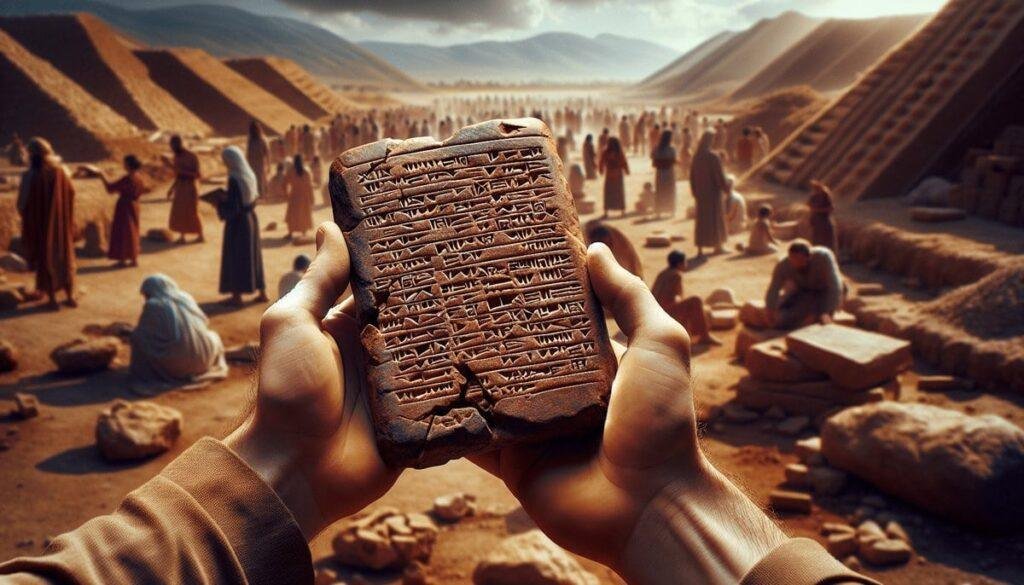An intriguing fact is that the oldest known complete copy of the Bible is the Codex Sinaiticus, dating back to the 4th century AD.
Curiosity arises as to where such invaluable treasures are safeguarded today, prompting a journey into the intricate web of locations that house these ancient manuscripts.
History of Original Bible Manuscripts
The history of the original Bible manuscripts spans centuries, with their preservation and dissemination playing a critical role in understanding the roots of the Christian faith. Hebrew manuscripts, written mostly in the ancient Hebrew language, form a significant part of these original texts. These manuscripts are essential for scholars and theologians as they provide insights into the early development of biblical texts.
Greek manuscripts, particularly the Septuagint, a Greek translation of the Hebrew Bible, are also important in the history of the Bible manuscripts. The Septuagint is significant because it influenced the New Covenant writers and the early Christian church. The Greek manuscripts offer a window into how these texts were interpreted and understood by the early Christian communities.
Among the most famous discoveries relevant to the original Bible manuscripts are the Dead Sea Scrolls. These scrolls, found in the mid-20th century near the Dead Sea, contain some of the oldest known copies of biblical texts, including fragments of every book of the Hebrew Bible except Esther. The Dead Sea Scrolls have provided scholars with valuable insights into the textual history of the Bible and shed light on the transmission of these sacred writings over time.
Locations of Early Biblical Manuscripts
Spanning museums, libraries, and private collections globally, early biblical manuscripts hold a significant place in the historical narrative of the Christian faith. These invaluable artifacts provide insights into the development of the Bible and the transmission of its texts. Key locations housing early biblical manuscripts include the Israel Museum, which is renowned for the preservation of major manuscripts like the Dead Sea Scrolls. However, it's important to note that there's no centralized location for all biblical manuscripts; instead, they're distributed across various institutions and collections worldwide.
In the domain of early biblical manuscripts, the Greek New Scripture and Hebrew texts are of particular significance. Libraries such as the Claremont Graduate School and organizations like the United Bible Society play important roles in cataloging and preserving these ancient texts. The Greek New Scripture manuscripts, in particular, shed light on the early Christian communities and their beliefs.
Moreover, the writings of the Church Fathers, such as Origen and Jerome, provide valuable insights into the transmission and interpretation of biblical texts. Their commentaries and translations have contributed significantly to the study of early biblical manuscripts. Overall, these diverse locations housing early biblical manuscripts offer a rich tapestry of historical and religious importance for scholars and believers alike.
Preservation Techniques for Ancient Scriptures
Preserving ancient scriptures requires meticulous care and specialized techniques to confirm their longevity and integrity. When it comes to the preservation of Biblical Manuscripts and other ancient texts, conservationists and experts employ various methods to make certain these valuable artifacts remain accessible for generations to come.
Here are some key preservation techniques used for ancient scriptures:
- Controlled Environments: Storing manuscripts in environments with specific temperature and humidity levels helps prevent deterioration and slows down the aging process.
- Specialized Equipment: Conservationists utilize tools like dehumidifiers, UV filters, and acid-free materials to protect delicate manuscripts from environmental damage.
- Digitization: The process of digitizing ancient scriptures not only allows for easier access but also serves as a means of preserving the original physical copies by reducing the need for excessive handling.
Through the application of Textual Criticism and other preservation methods, including regular inspections, monitoring, and preventive measures, the integrity and longevity of manuscripts of the Bible and other ancient texts can be safeguarded for scholars, historians, and enthusiasts to study and appreciate for years to come.
Significance of Original Bible Copies
In light of the absence of the original autographs of the Bible, the significance of the existing copies lies in their role as invaluable conduits to the teachings and history encapsulated within the sacred scriptures. These manuscripts, particularly those of the New Scripture and Old Scripture, serve as vital links to the past, providing insight into the origins of Christianity and the teachings of the prophets.
To better understand the importance of these copies, let's explore a table showcasing some key aspects:
| Aspect | Description | Importance |
|---|---|---|
| Historical Value | These manuscripts offer a glimpse into the early Christian communities and the transmission of biblical texts. | Helps scholars trace the development of biblical teachings. |
| Textual Variants | By comparing different copies, scholars can identify variations in wording, aiding in the study of ancient languages. | Enables a deeper analysis of the nuances in biblical texts. |
| Cultural Significance | The preservation of these manuscripts reflects the reverence and dedication of scribes throughout history. | Highlights the enduring impact of the Bible on various cultures. |
| Faith Preservation | Through these copies, believers can access the word of God, fostering spiritual growth and understanding. | Sustains the foundation of faith for millions around the world. |
These manuscripts not only bridge the gap between the ancient world and the present but also serve as a witness to the enduring nature of the Bible's teachings.
Journey to Uncover Bible Manuscript Secrets
How do scholars and researchers set out on the journey to unravel the secrets hidden within ancient Bible manuscripts? Delving into the depths of history and language, these experts set forth on a quest to reveal the mysteries held within the sacred texts. Here are three key aspects of their journey:
- Studying New Scripture Manuscripts: Scholars meticulously examine the vast array of New Scripture manuscripts, comparing and analyzing variations in texts to trace the evolution of biblical narratives and teachings over time. By scrutinizing these documents, they gain valuable insights into the early Christian communities and the transmission of the Gospel message.
- Exploring Old Scripture Manuscripts: The investigation extends to Old Scripture manuscripts, shedding light on the Hebrew Scriptures' preservation and interpretation. Through the study of ancient Hebrew texts, researchers decipher linguistic nuances, uncover cultural contexts, and deepen their understanding of the religious beliefs and practices of ancient Israel.
- Decoding Ancient Bible Manuscripts: By decoding and interpreting ancient Bible manuscripts, scholars unearth hidden meanings, resolve textual discrepancies, and reconstruct the historical context of biblical events. These artifacts provide a window into the world of antiquity, offering valuable clues about the composition, transmission, and interpretation of the sacred texts that have shaped religious traditions for centuries.
Through their dedicated efforts, scholars continue to unravel the rich tapestry of ancient Scripture manuscripts, revealing the secrets that have been preserved through the ages.


